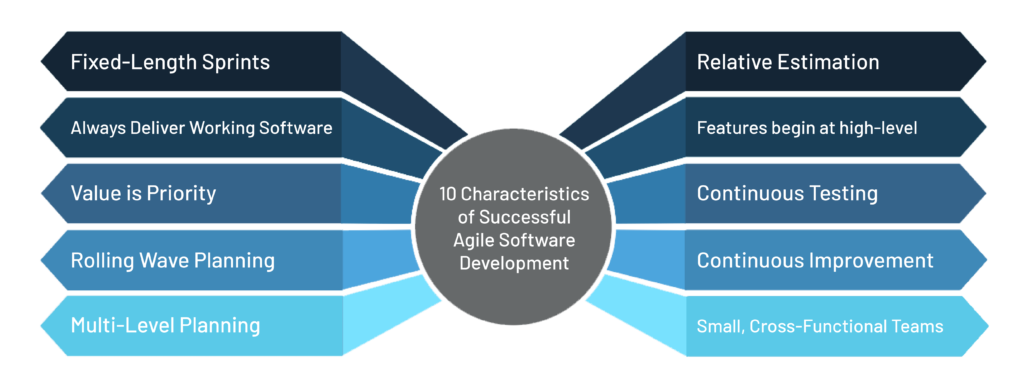Agile Development

Swiftfore follows the best practices and/or stages of SDLC ensures the process works in a smooth, efficient, and productive way.
1. Plan. “What do we want?” In this stage of SDLC, the team defines the requirements of the new software and determines the cost and resources required. It also details the risks involved and provides sub-plans for softening those risks. In this stage, a Software Requirement Specification document is created.
2. Analysis. “What don’t we want?” This stage of SDLC means getting input from all stakeholders, including customers, salespeople, industry experts, and programmers. Learn the strengths and weaknesses of the current system with improvement as the goal.
3. Design. “How will we get what we want?” This phase of SDLC starts by turning the software specifications into a design plan called the Design Specification. All stakeholders then review this plan and offer feedback and suggestions. It’s crucial to have a plan for collecting and incorporating stakeholder input into this document. Failure at this stage will almost certainly result in cost overruns at best and total collapse of the project at worst.
4. Implement. “Let’s create what we want.” This SDLC stage develops the software by generating all the actual code. If the previous steps have been followed with attention to detail, this is the least complicated step.
5. Test. “Did we get what we want?” In this stage, we test for defects and deficiencies. We fix those issues until the product meets the original specifications.
6. Deploy & Maintain. “Let’s start using what we got.” Often, this part of the SDLC process happens in a limited way at first. Depending on feedback from end users, more adjustments can be made. The plan almost never turns out perfect when it meets reality. Further, as conditions in the real-world change, we need to update and advance the software to match
Our Approach
By building an adaptable platform, we can ignite your organization’s digital transformation across your enterprise. Adopting a platform that is built on Agile development and DevOps can facilitate such transformation. We help our clients introduce and adapt Agile using solutions that meet business requirements. We partner with our customers for high-quality, end-to-end project execution. Using our experts in Agile models and highly skilled, qualified and passionate Agile teams, we can transform delivery of application systems.
What We Offer
SwiftFore software application development services help build powerful, digital-ready Information Technology backbones with low TCO, while simultaneously optimizing the legacy systems. We offer:
- Full Lifecycle Development
- COTS/Package Implementation
- Platform/Product Upgrade
- Portals and Content Management
Technologies and Solutions, We Provide through our core team of project managers and senior developers, we have extensive experience with:
- Integrating systems, both on-premises as well as in the cloud.
- Implementing software rewrites that allow a seamless update of legacy systems into modern technologies.
- Providing expertise in meeting independent standards such as CMMI and ISO.
- Implementing web-based technologies such as Java, .Net, ColdFusion in order to allow clients to communicate with their stake holders in the most efficient manner possible.
- Expertise with a wide array of back-end technologies such as middle tier servers, database servers etc.
- Extensive experience with helping both the private and public sectors meet compliance requirements such as WCAG/Section 508
- Implementation of Business Intelligence solutions including Power BI and SQL Server Reporting Services.
